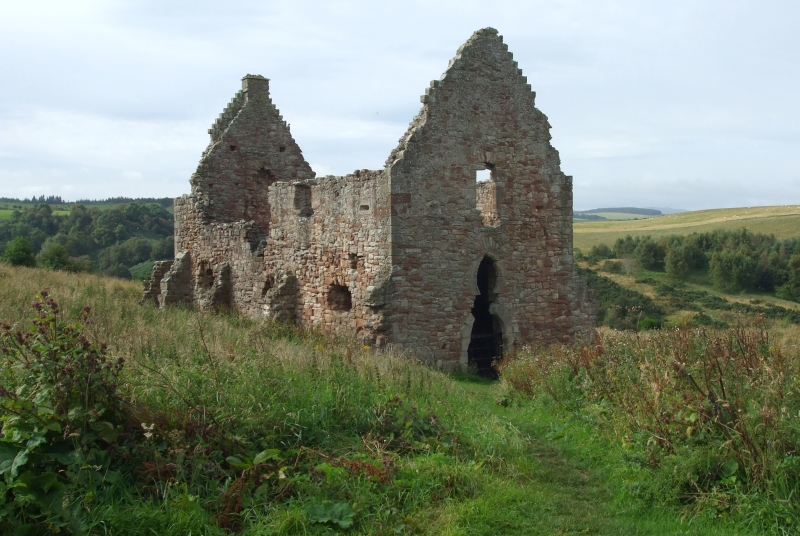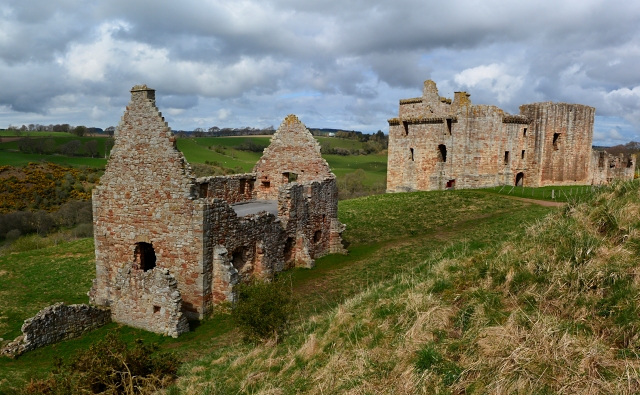
It has grown late; it's nearing closing time. We walk out to the stable, with its horseshoe shaped doorway, behind the castle. The grass here is at least two feet tall and ripples like waves in the breeze.
Alistair points out the way to the quarry where the stone came from to build the castle and a pang of guilt strikes me. What's done is done though, and I tell myself that it's as if the castle somehow knew the emotions it evokes in Robin. A little piece of it wanted to go home with her.
Back down the long dirt path we walk toward the car park, asking Alistair all sorts of questions which he seems very willing to answer for us. This must be a lonely place to work, I say, out here atop this hill all day with only the occasional visitor. There's no electricity and no bathroom, he replies. I notice that he's carrying a laptop computer. "No phone line either," he responds to my question as to the presence of a modem in his compact system.
He tells us about his childhood in nearby Gowkshill. I had seen the sign to Gowkshill the day before on our way from Stirling to Melrose and it made me laugh at the time, knowing that "gowk" means "fool." But Alistair is no fool on the hill. He is a man with deep, passionate feelings for his homeland. Forced into early retirement from his position within an international insurance agency, he now tends to Crichton during the summer months.
Crichton, where as a boy he and his friends played among the ruins and later, as teenagers, rode their motorbikes through the grassy track of the moat. He gestures out over the valley, telling us that he lives three miles in that direction; always has and always will; he's never felt the desire to leave this place. Crichton Castle has been, and will always be a part of his life.
Robin offers him a ride home, but he replies that his wife is picking him up. She pulls into the car park just as we arrive and we all bid him a fond farewell.

Crichton Castle comprises four contiguous buildings arranged around an inner courtyard. The 14th century tower lies at the east of the castle, and has a vaulted basement and a vaulted hall above, although the south-west corner of the tower has collapsed.
To the west of this tower was a barmkin. William Crichton extended the castle in the early 15th century, building a second tower to the south, forming a strong L-plan, with the gate between the two towers. The south tower was entered by a door in the center, with vaulted cellars either side. Two halls occupied the first and second floors.
In the later 15th century a west block was added, with a six-story tower at the south-west, containing several bedrooms with garderobes. A stair in the south block gave access to these rooms. The north range was added at this time, closing the courtyard, but this section was heavily rebuilt in the following century.
To the south of the castle is a large stable block, with a horseshoe-shaped window and lodgings above.
Read more about Crichton Castle at Wikipedia.